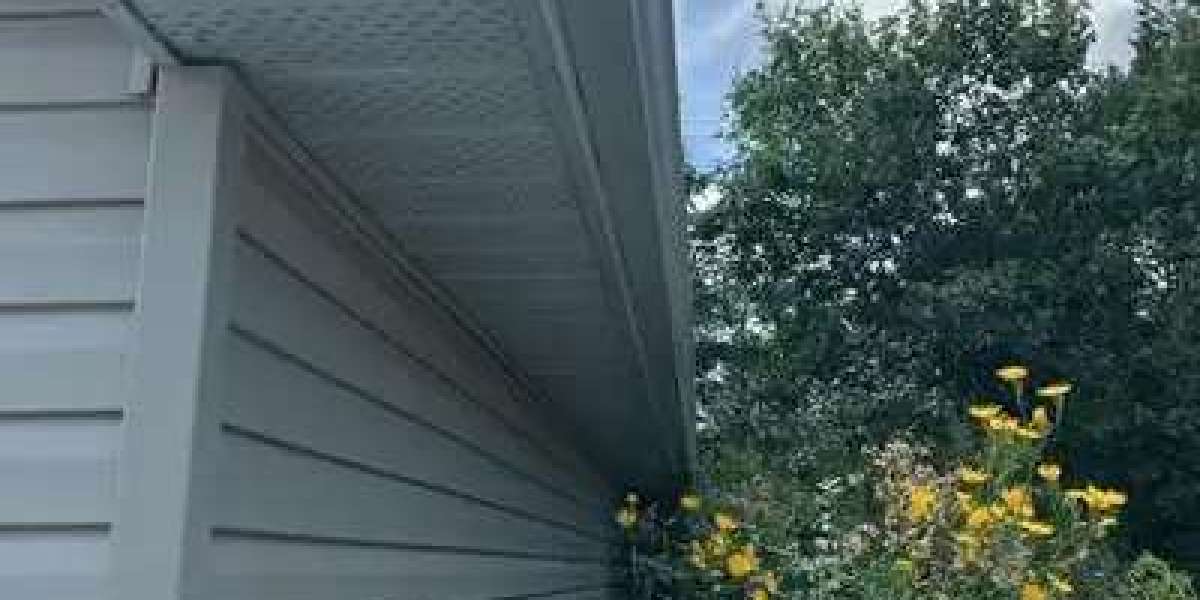Your roofline is more than just where your roof meets the walls of your house. It's a carefully constructed edge with several crucial components working in harmony to protect your home from the elements and enhance its curb appeal. While elements like shingles and gutters often take center stage, there's a vital, often overlooked component called the fascia. Understanding what fascia is in roofing, its function, and the materials it's made from is essential for any homeowner looking to maintain a healthy and aesthetically pleasing roof.
What Exactly is Fascia?
At its most basic, the fascia is the vertical finishing edge connected to the ends of the roof rafters or trusses. Think of it as the trim board that runs along the lower edge of your roof, directly above the exterior walls. It's the board you often see gutters attached to. While it might seem like a simple cosmetic addition, the fascia plays a far more significant role in the overall integrity and functionality of your roofing system.
Why is Fascia So Important?
The fascia serves several critical purposes, making it an indispensable part of your roofline:
Protection Against the Elements
One of the primary functions of the fascia is to protect the underlying roof structure from water damage. By covering the exposed ends of the rafters and the edge of the roof deck, the fascia prevents rain, snow, and ice from seeping into these vulnerable areas. Without proper fascia, moisture could penetrate the roof structure, leading to rot, mold growth, and structural weakening over time. This protection extends to preventing pests like insects and small animals from entering the attic space through these openings.
Providing Support for Gutters
The fascia board provides a sturdy and secure mounting surface for your gutters. Gutters are essential for channeling rainwater away from your home's foundation, preventing soil erosion and potential basement flooding. Without a solid fascia, gutters wouldn't have a reliable place to be attached, compromising their ability to function effectively. A securely attached gutter system relies heavily on the integrity of the fascia.
Enhancing Aesthetic Appeal
Beyond its functional roles, the fascia also contributes significantly to the overall aesthetic appeal of your home. It provides a clean, finished look to the roofline, concealing the raw ends of the rafters and creating a neat and uniform appearance. Fascia boards come in various materials and colors, allowing homeowners to choose options that complement their siding, trim, and overall architectural style. A well-maintained fascia can significantly enhance your home's curb appeal and value.
Contributing to Ventilation
In some roofing designs, the fascia can also play a role in attic ventilation. Soffit vents, located underneath the eaves, often work in conjunction with ridge vents or other exhaust vents to create airflow through the attic space. The fascia provides a clean edge for the soffit to meet, ensuring proper air intake and circulation, which helps regulate attic temperature and prevent moisture buildup.
Common Fascia Materials
Fascia boards are typically made from materials that are durable and resistant to the elements:
Wood
Traditional wood fascia, often made from pine or fir, is a common and relatively affordable option. However, wood is susceptible to rot, insect infestation, and requires regular painting or staining for maintenance and protection.
Aluminum
Aluminum fascia is a popular choice due to its durability, low maintenance requirements, and resistance to rust and rot. It's often installed as a capping over a wooden backboard for added strength. Aluminum fascia comes in a variety of colors and can be easily cleaned.
Vinyl
Vinyl fascia is another low-maintenance option that is resistant to moisture and insects. It's available in various colors and styles and is generally more affordable than aluminum. However, vinyl can be prone to cracking or fading over time, especially in extreme weather conditions.
Fiber Cement
Fiber cement fascia is a durable and fire-resistant option made from a mixture of cement, sand, and cellulose fibers. It offers excellent resistance to rot, insects, and warping and can be painted to match any desired color. While it's a durable material, it can be more expensive and heavier to install than other options.
Maintaining Your Fascia
Regular inspection and maintenance of your fascia are crucial for ensuring its longevity and effectiveness. Look for signs of damage such as rot, cracks, peeling paint, or sagging. Addressing any issues promptly can prevent more significant and costly problems down the line. Keeping your gutters clean will also help protect the fascia from excessive water exposure.
Conclusion
The fascia board, though often overlooked, is a critical component of your roofing system. It provides essential protection against the elements, offers vital support for your gutters, enhances your home's aesthetic appeal, and can even contribute to attic ventilation. Understanding its function and ensuring it's well-maintained is a key aspect of responsible homeownership. By paying attention to this unsung hero of your roofline, you can safeguard your home's structural integrity and preserve its beauty for years to come.
Visit the official website of a2zroofing.ca



